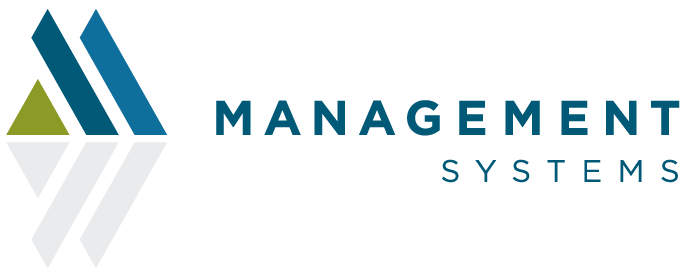Culture Management
Management Systems defines an organization’s culture as consisting of the values, beliefs and norms which influence the behavior of people. Our research has demonstrated that culture is one of the six key factors (contained in the Pyramid of Organizational Development™) that contribute to organizational success over the long-term. In addition, our empirical research has shown that corporate culture can have a statically significant impact on the “bottom line” of financial results and that it can have a profound impact on corporate success.
Our research has identified five key factors or dimensions of corporate culture which are statistically linked to financial results and therefore must be included in formal culture statements and explicitly managed. These five dimensions are:
- Customer-Client Orientation – the way the organization thinks about and treats its customers.
- “People Orientation” or Orientation Toward Employees – the way the organization thinks about and treats its people.
- Standards of Performance and Accountability – the organization’s standards for performance and what people are held accountable for.
- Innovation and Commitment to Change – how the company views, reacts to, and manages innovation and change.
- Company Process Orientation – the view that people in the company have of such processes as planning, decision making, communication, and what we term “corporate citizenship” or “social responsibility.”
Organizations can have strong or weak cultures; functional or dysfunctional cultures. A strong culture is one where all employees understand and behave in ways consistent with company values, beliefs and norms. A weak culture is one where people don’t understand what the culture is and/or don’t embrace it. A functional culture has a positive impact on the company’s success. A dysfunctional culture detracts from a company’s ability to be sustainably successful over the longer term.
At Management Systems, we make a distinction between what we call a company’s “real” (or what we sometimes refer to as the “current”) and “desired” (or what we sometimes refer to as “strategic”) culture. The real culture is the culture that actually influences people’s behavior, while the desired culture is the culture that the company wants to have in place to support the achievement of its longer-term Goals. The most successful organizations are those where the real and the desired cultures are very much aligned.
To achieve and maintain a high degree of alignment between real and desired cultures, a company needs to have an effective culture management process in place.
Management Systems’ Six Step Culture Management Process is shown and briefly explained below:
Step 1: Define the “Desired Culture,” that is, the culture that will most effectively support the achievement of long-term goals. This statement of desired culture is typically created by the senior leadership team.
Step 2: Identify the Current Culture, that is, the culture that is actually influencing employee behavior (which may or may not be totally consistent with the organization’s desired culture). This step involves collecting input from employees throughout the company about their perceptions of the current culture.
Step 3: Identify and Analyze “Gaps” (Differences) Between Desired and Current Cultures.
Step 4: Develop a Culture Management Plan that identifies Objectives and Goals for 1) closing the gaps identified in Step 3; and 2) building upon culture “strengths.
Step 5: Communicate the Culture Management Plan throughout the company. This can include setting and holding managers and, perhaps, all employees accountable for culture management Goals.
Step 6: Regularly Review Performance Against the Plan and Update, as Needed. In brief, progress against this plan – like the company’s Strategic Plan – should be reviewed and the plan should be formally updated once a quarter.
Note: Management Systems’ Culture Surveys can be used to help complete Steps 1 to 3 and the data obtained from these surveys can be used as input to Step 4.
**The culture management framework is further explained in several of our books and articles (see Publications) including Growing Pains and Corporate Culture: The Ultimate Strategic Asset.

